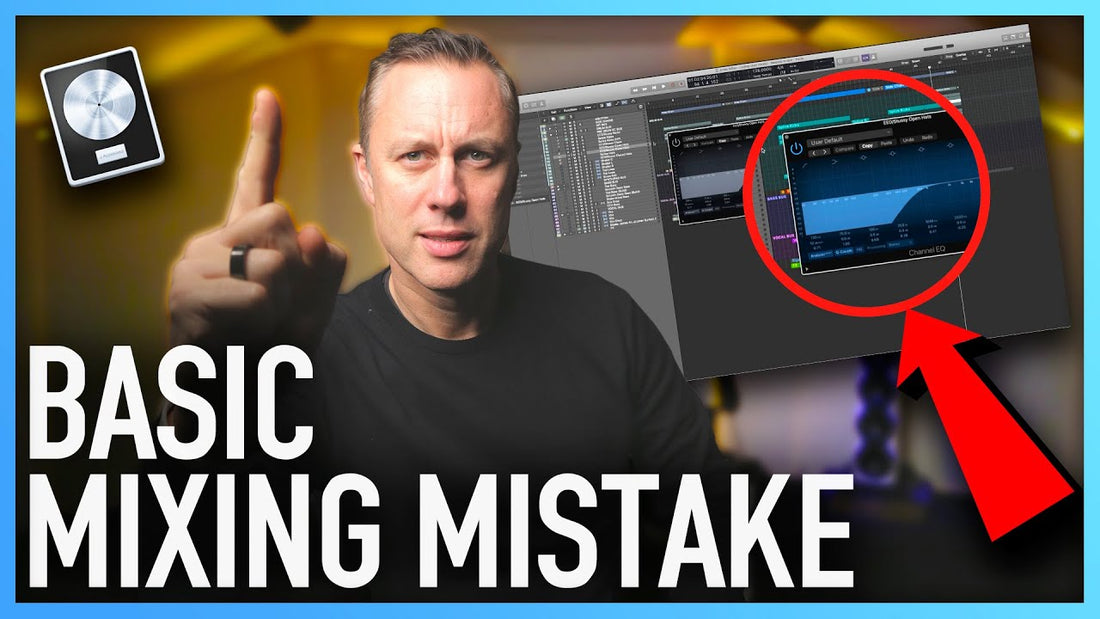
#1 MIXING MISTAKE! | And How To Fix It
Share
VIDEO TRANSCRIPTION
Welcome back I'm Streaky. Today's quick video is the number one mistake that I see people do a lot in mixing. Here we go. Let's dive in. So here we are inside of Logic. Now, the number one thing that I see most people doing is they start to EQ tracks as individual instruments. So what you want to do is bus out the different sections of the mix, and then you want to start EQing on the buses. So you're listening to, for example, the drums altogether, all the instruments together, the effects, things like that. So you can then EQ them, listen to them as they're playing. And then EQ them as a whole sound, rather than individual instruments. Now I'm not saying you can't EQ individual instruments, but the fact is what you're doing there is you're sound designing and you might take some EQ away, or you might add some EQ that is actually taking away from the whole sound of the drums when they are all together in a mixed bus as the drums.
So really bus things out into their groups, and then start EQing onto those groups. And then listen to the track as a whole, to see where you can do cuts, where you can change things within those different groups to then make them all sit in the mix and work together as one. I see this happening as well with compression. So you can actually do the same thing with compression. Compress the individual tracks so you get them sounding how you want. Put them into buses altogether, and then compress the bus and then compress the whole mix so that you've got loudness happening throughout, gain staging happening throughout. This way you'll get a lot of clarity and a lot more space within the mix, rather than trying to do everything on individual instruments. You'll never get the sound of the mix sounding together and working as one sound.
So what you want to try and avoid is soloing instruments on their own, and then EQing them like that. Put them into the bus. EQ all of them together within the bus. If you do need to make slight changes then to the levels, to some small EQ tweaks, that's fine. But really you want to be listening as a whole and having the mindset that you're listening to all these buses and how those buses all go towards the main master bus to give you that finished mix sound. Otherwise, you can EQ the individual instruments forever because they're always going to sound different. And the more EQ you do on the individual ones, the more that's going to change the whole mix. The more that's going to change each of the buses. So really to cut this to its core, it's all about EQing the buses.
Once you've got all this working, once you've got all the buses working together, you've EQ them, you've put them together, you've added your compression to the different buses rather than the individual instruments. Then you want to sort of glue them, push them together with say a mix bus compressor. A video I did a couple of weeks ago. That's now showing above is on gluey compression on a mix bus. So check that one out. I'm sure you’ll enjoy that. And this will get your mixes sounding more finished and ready for mastering. And then once you have that mix all finished, watch the other video that's going to pop up now, which is me mastering an Ozone. So if you have got Ozone and you want to just use it as a quick mastering tool, then try the video that's coming up next.
If you want any more tips and tricks on mixing or mastering, please let me know in the comments. I always open to new suggestions. If you've got any tracks to send me, please send those to demo@streaky. Also any mixes you've got, I'm happy to give those a whirl too. So send those two demos @streaky. See you on the next one.




